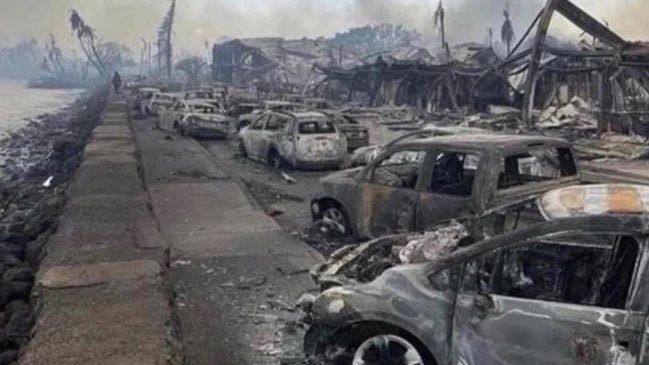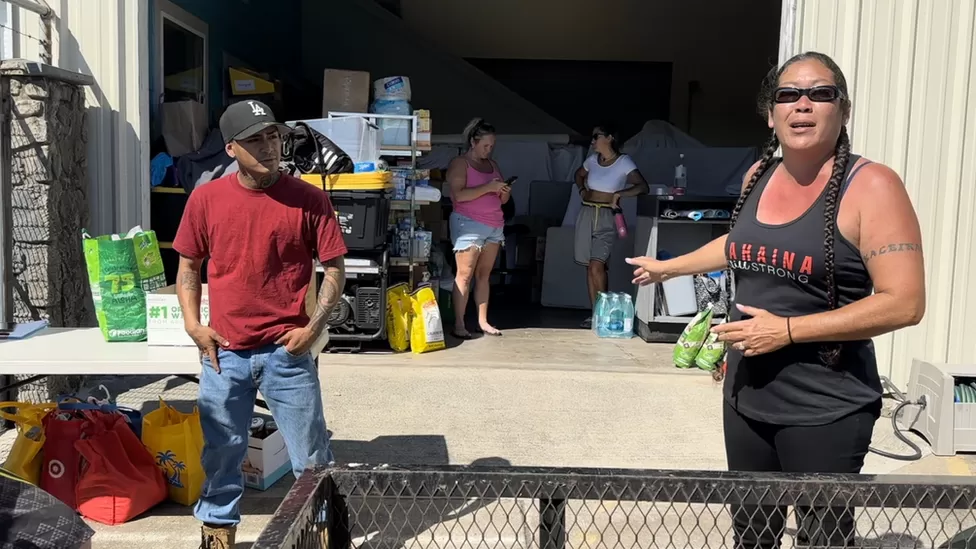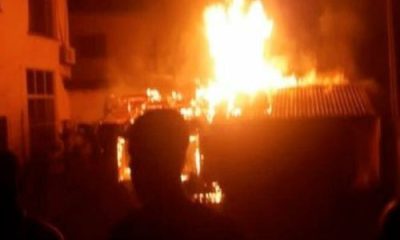
News
Maui Fire: The Devastating Blaze That Claimed Over 96 Lives and Destroyed a Historic Town

On Tuesday, August 8, 2023, a wildfire broke out on the Hawaiian island of Maui, spreading rapidly across the dry and windy landscape. Within hours, the fire reached the historic town of Lahaina, a popular tourist destination and a cultural heritage site.
The flames engulfed thousands of buildings, including homes, businesses, churches, and museums. Many residents and visitors were caught off guard by the fast-moving fire and had little time to evacuate.

Some were trapped by the flames or the smoke, while others were unable to reach safe shelters or transportation.
By the time the fire was brought under control on Friday, August 11, 2023, it had burned more than 50,000 acres of land and destroyed more than 2,700 structures. The official death toll stood at 96, but hundreds of people were still missing or unaccounted for. It was the worst natural disaster in Hawaii’s history and one of the deadliest wildfires in the United States.
How Did the Fire Start and Spread?
The exact cause of the fire is still under investigation, but authorities suspect that it was ignited by a human activity, such as a campfire, a cigarette, or a power line. The fire started near the Kaanapali Resort, a luxury hotel complex on the west coast of Maui. The area had been experiencing a severe drought and high temperatures for weeks, creating dry and flammable vegetation. The fire was also fueled by strong winds from Hurricane Hector, which was passing south of the Hawaiian islands. The hurricane brought gusts of up to 81 mph (130 km/h), which fanned the flames and carried embers over long distances.

The fire quickly spread across the island, reaching Lahaina by Tuesday evening. Lahaina is the largest town on Maui’s west coast and has a population of about 12,000 people. It is also one of the oldest and most historic towns in Hawaii, dating back to the 18th century when it was the capital of the Kingdom of Hawaii. Lahaina has many historic landmarks, such as the Baldwin Home Museum, the Wo Hing Temple Museum, and the Lahaina Banyan Court Park, which features a massive banyan tree that covers almost an acre of land.
The fire swept through Lahaina’s downtown area, where most of the historic buildings are located. The fire also reached the Lahaina Harbor, where many boats and yachts were docked. The fire destroyed most of the structures and vehicles in its path, leaving behind charred ruins and ashes. Many people who were in Lahaina at the time of the fire tried to escape by car or by foot, but some were trapped by road closures or traffic jams. Others sought refuge in nearby shelters or hotels, but some of these places were also threatened by the fire.
What Was the Response and Recovery Effort?
The Maui Fire Department was the first to respond to the fire, but it soon became overwhelmed by the size and intensity of the blaze. The department requested assistance from other agencies, such as the Hawaii Fire Department, the Hawaii National Guard, and the Federal Emergency Management Agency (FEMA). More than 1,000 firefighters from various states and countries joined the effort to contain and extinguish the fire. They used helicopters, planes, trucks, and bulldozers to create firebreaks and drop water and retardant on the flames.
The firefighters faced many challenges in battling the fire, such as limited water supply, rugged terrain, poor visibility, and extreme heat. They also had to deal with frequent flare-ups and spot fires that ignited new areas. The firefighters worked tirelessly for four days until they managed to contain 90% of the fire by Friday night.

Felicia Johnson (right) is among the locals who have been coordinating efforts to help victims of the wildfires
Meanwhile, other agencies and organizations focused on rescuing and supporting the survivors of the fire. The Maui Police Department coordinated search and rescue operations to locate missing or injured people. They also enforced road closures and curfews to prevent looting and vandalism. The Maui County Civil Defense Agency activated emergency shelters and distributed food, water, clothing, toiletries, and medical supplies to evacuees. The American Red Cross also provided assistance to displaced residents and visitors.
The recovery effort also involved identifying and recovering the bodies of those who perished in the fire. The Maui County Medical Examiner’s Office worked with forensic experts from other states to conduct autopsies and DNA tests on the remains. They also collected dental records and personal items from family members to help with identification.
The recovery effort is expected to take months or even years to complete. The authorities estimate that the fire caused more than $1 billion in damages to property and infrastructure. Many residents and business owners lost their homes and livelihoods in the fire. Some of them may not be able to rebuild or return to Lahaina due to financial or emotional reasons. The fire also had a significant impact on the environment and the wildlife of Maui. The fire destroyed thousands of acres of native forest and endangered species habitats. The fire also released large amounts of carbon dioxide and other pollutants into the atmosphere, contributing to global warming and climate change.
What Were the Lessons Learned and the Questions Raised?
The Maui fire was a tragic and unprecedented event that shocked and saddened the people of Hawaii and the world. The fire also raised many questions and concerns about the preparedness and response of the authorities and the community. Some of the questions and issues that emerged from the fire are:
– Did the authorities have an adequate emergency plan and early warning system for wildfires? Many people reported that they did not receive any alerts or notifications about the fire until it was too late. Some people also claimed that they did not hear any sirens or see any signs of evacuation. The state’s attorney general is conducting a comprehensive review of how the authorities handled the fire and whether they followed the proper protocols and procedures.
– Did the authorities have enough resources and equipment to fight the fire? Some firefighters complained that they did not have enough water, hoses, trucks, or personnel to combat the fire. They also said that they faced delays in getting reinforcements and supplies from other agencies. Some critics argued that the authorities should have invested more in fire prevention and mitigation measures, such as clearing brush, creating firebreaks, and installing sprinklers.
– Did the residents and visitors have enough awareness and education about wildfire risks and safety? Some people admitted that they did not know how to protect themselves or their properties from wildfires. They also said that they did not have any emergency kits or plans in case of a fire. Some experts suggested that the authorities and the community should have conducted more public outreach and training programs on wildfire preparedness and response.
– Did the climate change and human activities contribute to the fire? Some scientists pointed out that the fire was influenced by global warming, which caused higher temperatures, lower humidity, and stronger winds. They also said that human activities, such as deforestation, urbanization, and tourism, increased the fire hazard and vulnerability of Maui. They urged the government and the public to take action to reduce greenhouse gas emissions and adopt more sustainable practices.
The Maui fire was a wake-up call for everyone to be more aware and prepared for wildfires and other natural disasters. It also showed the importance of cooperation and solidarity among different agencies, organizations, and individuals in times of crisis. The fire also highlighted the need for resilience and recovery in the face of adversity. The people of Maui have shown remarkable strength and courage in coping with the aftermath of the fire. They have also received tremendous support and sympathy from people around the world. Together, they hope to heal, rebuild, and restore their island paradise.




























